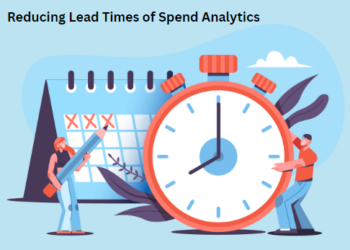Data Harmonization to expand your addressable spend
Procurement teams are constantly facing challenges when it comes to increasing their addressable spend to rationalize supplier base and negotiate better terms with suppliers. This article is a deep dive and follow up on “addressable spend key challenges blog”. Here we specifically review data quality and homogeneity challenges and potential resolutions.
The Challenge:
Recently in the World Digital Procurement Summit (Berlin) we conducted a live poll survey on key challenges of expanding addressable spend. Across multiple industries and companies of different sizes almost half of the audience pointed toward lack of access to data and having multiple sources of data as main challenges. In the past blogs we have shown how technology can help bridge the IT support gaps but, in this article, we would like to address challenges and resolutions on harmonizing data across multiple sources of information.
Why Data Harmonization Matters:
Spend data is often spread across different systems/ locations. Besides, these data sets are being managed under often inconsistent governance as well as fully independent organization. The outcome is a mixture of variety of data formats, with different degrees of completeness, many duplications and unfortunately sometimes errors as an additional noise element. As a result, it becomes difficult to gain a consistent, granular and accurate view of supplier base. If no data transformation takes place, this can lead to sub-optimized insights, missed opportunities for savings, redundancies, and errors that impacts the bottom line.
Therefore, value and ROI associated to data harmonization is usually immense but very much underappreciated. The ideal state is having a smart engine to process, enrich and transform all variety of spend data to provide a consistent, improved, and accurate view ready for further analysis.
Today we review two aspects with high impact impact across both direct and indirect spend – the supplier records and transactions.
- Normalizing and enriching Supplier records: The first step is to normalize the supplier names and identify supplier relationships within each and across data sources. Mithra-Ai maps each supplier to a unique identifier, which ensures consistency across all data systems. We use external data to find supplier parent-child relationships. Also in this stage, duplicated suppliers are being identified and normalized.
- Harmonizing Transactional Data: Finally, Mithra-Ai harmonizes the transactional data by categorizing it with the master taxonomy. This allows for easier analysis and reporting across all spend data.
The SME Is Kept in the Loop:
Through this process, subject matter experts are kept in the loop and can review and overwrite if needed. This ensures that the machine learning algorithm capture these feedbacks and eliminate similar action for similar transactions into the future.
Insight:
Data harmonization is crucial for procurement success. The above process for merging procurement spend data can help your team achieve a single, unified view of spend data in a matter of days. With accurate and meaningful data, your team can make better decisions “exponentially faster” and realize value for your organization and end-customers.
Turbocharge Category Strategy Execution
Turbocharge your category strategy execution & drive continuous business value Category owners invest significant time in stakeholder engagement, in data...
Rewiring Spend Analytics
Rewiring Spend Analytics - the New Era Procurement has more than ever to gain from advances in technology—and more to...






